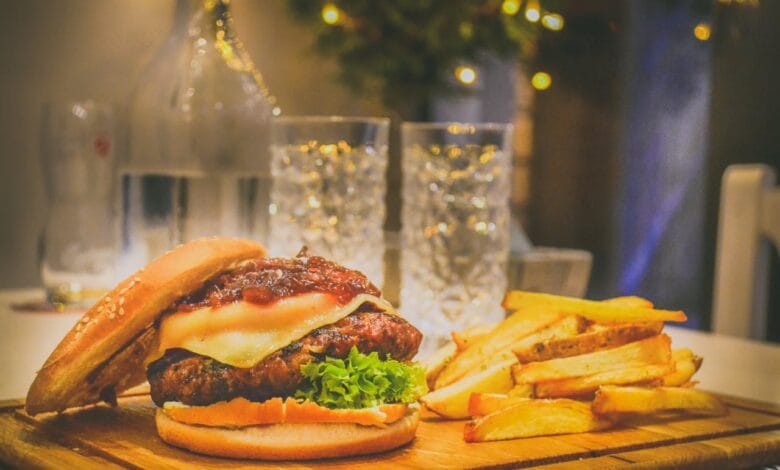How to Calculate Calories in Food?

Controlling food portion size is the easiest method for managing weight. To accomplish this, you must know how many calories (denoted by ‘kcal’) each food contains. But how to calculate calories in food?
Many may find the procedure of calorie estimation intimidating. This guide provides information and resources for determining the calories in your meals.
How Do I Calculate the Calories I Eat?
The macronutrients hold the key to grasping calorie content. A particular energy value is associated with each gram of these nutrients:
- Carbs = 4 kcal per gram
- Protein = 4 kcal per gram
- Fat = 9 kcal per gram
A food’s calorie content can be calculated by considering its macronutrient content. Most packaged food names have ‘Nutrition facts’, which can be quickly obtained from the packaging.
Sequential Calorie Calculation Process
The steps involved in calculating calories from a food label are broken out as follows:
Identify the Macronutrients
See the labels for the carbs, proteins, and fats sections. Grams (g) are usually used to list these values.
Multiply by Calorie Equivalents
Multiply a gram amount of each macronutrient by its corresponding calorie value.
Add the Calories
Add the calories from each macronutrient to determine the total number of calories in the serving size.
For instance:
A food label enumerates:
- Carbohydrates = 20g
- Protein = 10g
- Fat = 5g
Solution:
- Carbs = 20g × 4 kcal = 80 kcal
- Protein = 10g × 4 kcal = 40 kcal
- Fat = 5g × 9 kcal = 45 kcal
Total calories = 80 + 40 + 45 = 165 calories
Examining Fresh Produce Beyond the Label
Calculating the calories for fresh foods can be more challenging due to their variability. However, there are helpful resources available online that offer extensive databases detailing the calorie content of various fresh items per serving size. These resources include calorie-tracking websites and smartphone applications, which are convenient tools for accessing detailed nutritional information.
By utilizing these platforms, you can easily look up specific foods and obtain accurate calorie counts. Moreover, many of these applications provide additional features such as meal logging and daily intake tracking, enhancing your ability to manage your diet effectively. This systematic approach not only simplifies the process of calorie calculation but also enables you to make informed decisions about your food choices. As a result, you can maintain a balanced diet that supports your overall health and well-being.
Tips to Remember Calories Estimation
- Always read the label carefully to determine the appropriate serving size.
- Certain serving sizes are used to calculate calorie counts. Your calorie consumption will naturally rise if you eat a larger portion.
- Added sugars, oils, sauces, and spices can expand the calories in food.
- Keep going if you can’t find exact calorie data for a specific dish or fix!
- Accurate approximations are excellent, mainly when dealing with fresh vegetables.
The Bottom Line
Learning how to calculate calories in food is a crucial skill. To begin with, you will become an expert at estimating calories, which will help you better understand your dietary intake. Moreover, by instructing yourself on macronutrient values, you gain a deeper insight into the nutritional content of the foods you consume. Reviewing this information permits you to feed your body for optimal well-being and prosperity. Consequently, you will be able to make well-informed choices that support your health and fitness goals. Furthermore, this knowledge enables you to create balanced meal plans tailored to your specific needs. Ultimately, mastering calorie calculation empowers you to maintain a healthy lifestyle and achieve long-term wellness.
Read More:
How to Grow Organic Food
How to Remove Food Between Teeth?
Is Popcorn a Starchy Food?
